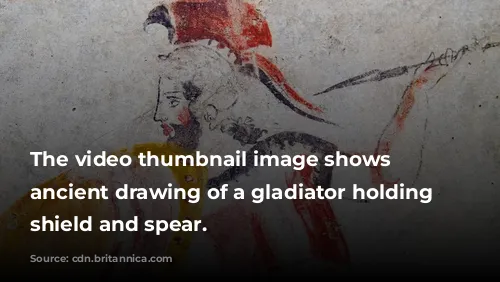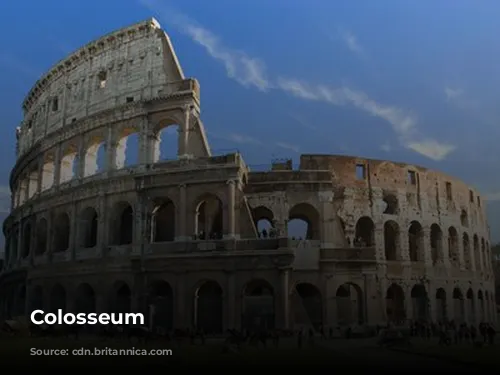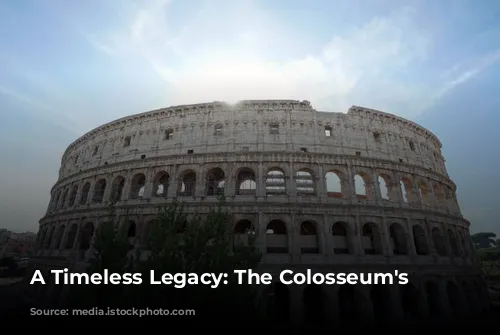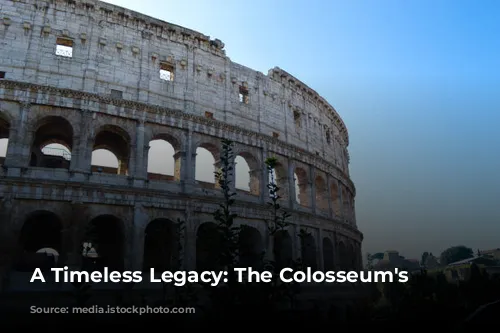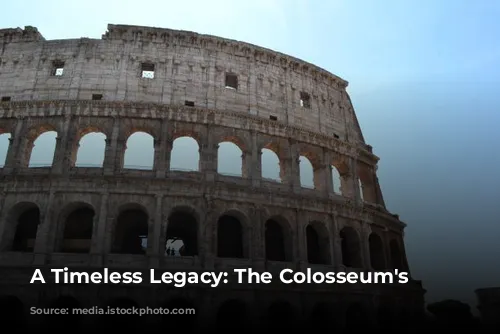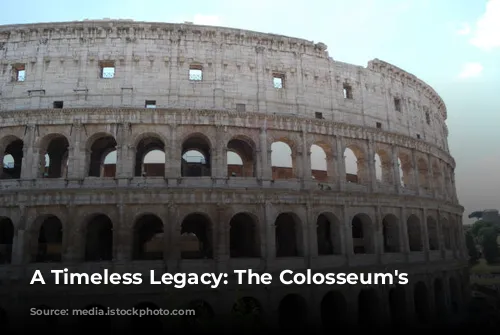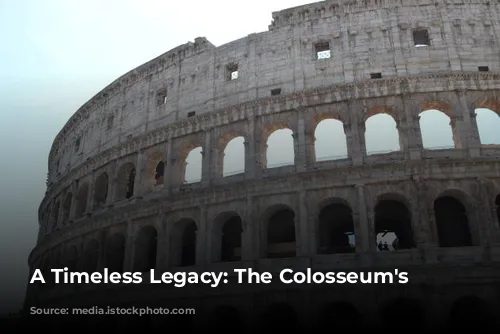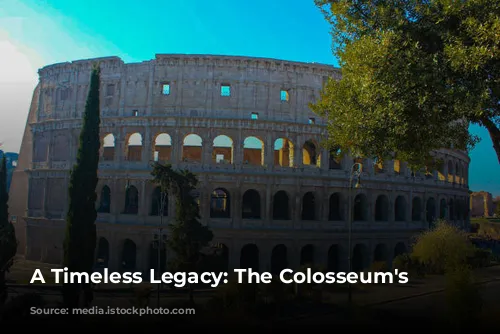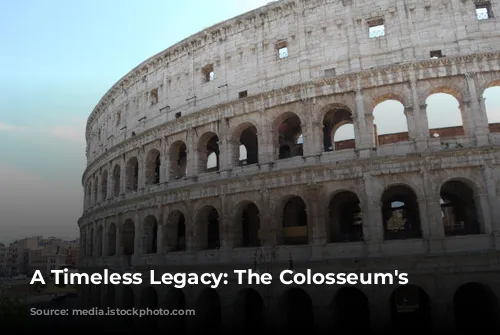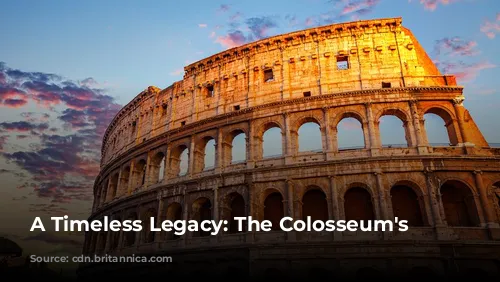The Colosseum, a majestic monument to Roman architectural and engineering prowess, stands as a testament to the grandeur of the ancient world. This iconic structure has not only captivated visitors for centuries but also plays a pivotal role in modern Italy’s economy. It draws millions of tourists every year, generating substantial revenue for the Italian government. In 2018 alone, the Colosseum, Roman Forum, and Palatine Hill together earned over $63.3 million (€53.8 million), making them the most profitable tourist attraction in Italy.
From Arena to Fortress: The Colosseum’s Transformations
After the decline of the Western Roman Empire, the Colosseum faced a period of neglect and decline. Its once-glorious arena fell into disrepair, and for centuries, it was repurposed for other uses. In the 12th century, the powerful Frangipane and Annibaldi families turned the Colosseum into a fortress, utilizing its massive structure for their own protection. In the 15th century, Pope Alexander VI allowed the Colosseum to be used as a quarry, further contributing to its deterioration.
However, the Colosseum’s story took a turn for the better in the 1990s with the start of state-funded restoration efforts. After over a thousand years of neglect, the Roman government recognized the historical significance of the Colosseum and launched ambitious restoration projects to preserve this iconic landmark. These efforts breathed new life into the Colosseum, restoring its former glory and allowing future generations to appreciate its architectural wonders.
From Imperial Dreams to Bloodshed: The Colosseum’s Birth
The Colosseum’s construction was a symbol of imperial ambition. Emperor Vespasian, seeking to revitalize Rome after the tumultuous year of the four emperors in 69 CE, envisioned a grand entertainment venue for the Roman people. As with other amphitheaters throughout the empire, the Colosseum was intended to be a spectacle of entertainment, hosting thrilling gladiator fights, exotic animal hunts, and even mock naval battles.
The Colosseum’s construction commenced under Emperor Vespasian between 70 and 72 CE. His son and successor, Titus, officially dedicated the completed structure in 80 CE. The Colosseum’s fourth story was later added by Emperor Domitian in 82 CE. This magnificent arena was financed by the spoils of war – the plunder from Titus’s conquest of Jerusalem in 70 CE. Sadly, Jewish slaves from Judea were forced to build this iconic structure.
A Colossal Structure: The Colosseum’s Design and Construction
The Colosseum, also known as the Flavian Amphitheater, is an awe-inspiring structure that represents the pinnacle of Roman engineering. This elliptical amphitheater, built of stone, concrete, and tuff, stands four stories tall, measuring 620 by 513 feet (189 by 156 meters). It had the capacity to hold up to 50,000 spectators, making it one of the largest arenas in the ancient world. The Colosseum is best known for its gladiatorial combat, where skilled warriors battled for the entertainment of the masses.
The Colosseum’s construction was a marvel of engineering. Unlike earlier amphitheaters, which were often built into hillsides for support, the Colosseum is a freestanding structure. The Romans employed a complex system of barrel vaults and groin vaults to support the immense weight of the structure. The arena’s exterior is adorned with three tiers of arcades, framed by engaged columns in the Doric, Ionic, and Corinthian orders. This impressive arrangement of columns became a defining feature of Renaissance architecture, known as the assemblage of orders. The main structural framework and facade are made of travertine, the secondary walls are volcanic tufa, and the inner bowl and the arcade vaults are concrete.
A World of Spectacle: The Colosseum’s Purpose
The Colosseum was designed to be a dazzling spectacle for the Roman people. It provided shelter from the elements with a massive retractable awning, known as the velarium. This awning was supported by masts that extended from the Colosseum’s top story. Hundreds of Roman sailors were tasked with manipulating the rigging that extended and retracted the velarium, providing shade for the spectators.
The Colosseum played host to a variety of thrilling spectacles. From gladiatorial combat, where warriors clashed in hand-to-hand battles, to contests between men and animals, the arena was a stage for bloodshed and entertainment. The Colosseum even hosted mock naval battles, showcasing the Romans’ ingenuity and their love for theatrical displays. However, there is no definitive evidence to confirm whether the Colosseum was used for the martyrdom of early Christians.
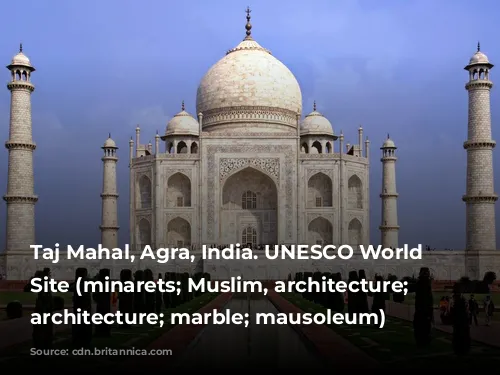
From Glory to Neglect: The Colosseum’s Fate
After the fall of the Roman Empire, the Colosseum’s fate took a dramatic turn. It fell into disrepair, and its once-glorious marble seats and decorative materials were stripped away. It was used as a quarry for building materials, resulting in significant damage to the structure. Over a thousand years of neglect left the Colosseum in a dilapidated state.
However, in the 19th century, efforts to preserve the Colosseum began in earnest. Pope Pius VIII led a campaign to protect this historical landmark. In the 1990s, a comprehensive restoration project was launched, bringing renewed attention to the Colosseum and its importance.
Today, the Colosseum is one of Rome’s most popular tourist attractions. Millions of visitors flock to this historical marvel each year, eager to experience the grandeur of the Roman Empire. The Colosseum continues to captivate and inspire people worldwide, serving as a constant reminder of Rome’s enduring legacy.
